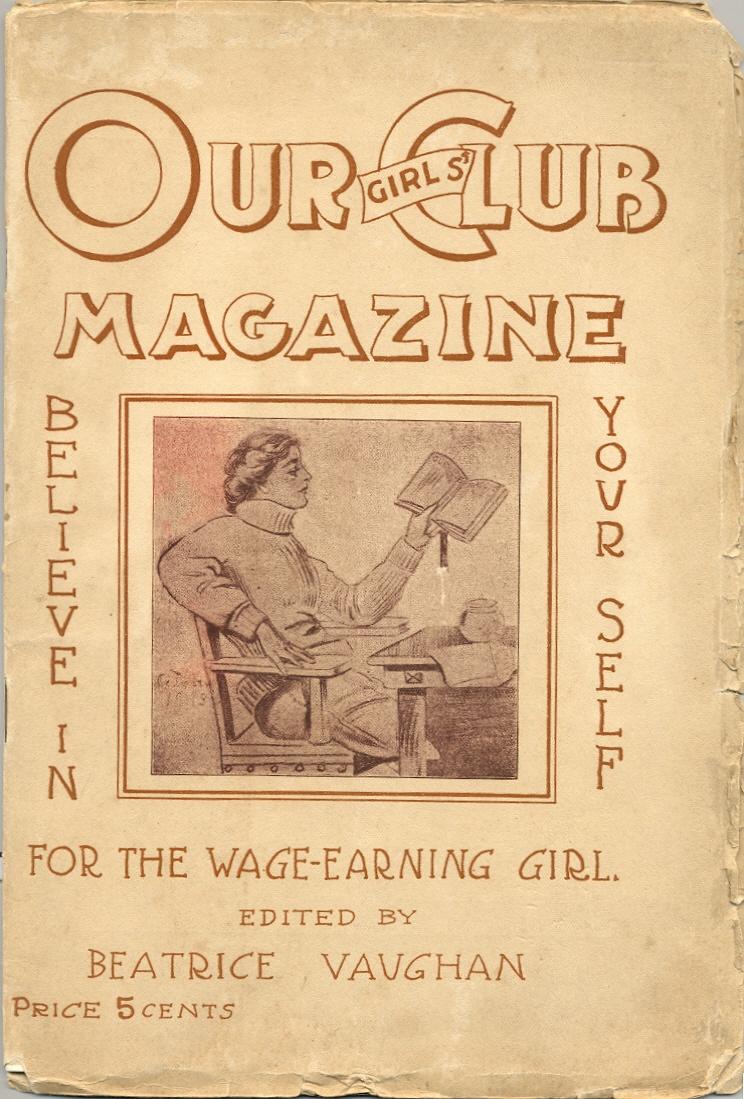Toledo working women banded together in the early twentieth century for support and camaraderie. Our Club Girls Magazine stood for the "social and commercial education of young wage-earning women." Experience life for young working women through its pages. This exhibit is drawn from four issues of Our Girls Club Magazine, published in 1913 and 1914. The magazines are held in the Canaday Center of the University of Toledo's Carlson Library. No other known issues exist. If you have any copies of Our Girl's Club in your attic, please let us know!
Our Club Girls' Magazine (UT Catalog Record)
Read the first issue: Our Club Girls' Magazine , Vol. 1, no. 1, October 1913 [PDF]
A Short History of Our Girls Club
Toledo’s Our Girls Club and magazine was typical in many ways of similar clubs elsewhere in the country during the early 20th century. These clubs were initiated and sponsored by middle and upper class women who were concerned about the moral life of single working women (almost always referred to as girls).
Women increasingly entered the paid working force in the United States in the 1880s. An economic depression that lasted from the 1870s to the mid 1880s created unemployment and lowered wages for working men, forcing other family members into the workforce. Since they were paid less than men, employers preferred to hire women. Mechanization of some processes made it possible for women to do tasks previously done by men. In addition, department stores appeared in large cities in the 1880s and began spreading to cities like Toledo. Store owners realized that women shoppers preferred female sales clerks. Hence working women were most likely to be found working in retail or in manufacturing. By 1890, about 1/3 of all industrial workers were female (Murolo, page 11).
Working women were almost always in their teens and twenties, unmarried, white, and from a northwestern European background. They usually lived with their families, to whom they gave all or a large portion of their wages. American-born girls usually chose factory or retail work over becoming domestic servants. This contributed to the servant problem – a diminishing supply of available help – for the middle and upper classes, resulting in resentment towards working girls. This, and suspicion that liberties afforded by paid employment would lead to questionable behavior, fueled the concern of the upper classes. The clubs sponsored social and educational activities designed to keep young working women on the straight and narrow.
In Toledo, the club and magazine was started by Beatrice Vaughan, in July of 1910, with 25 members. Our Girls’ Club followed the pattern previously set in such cities as New York or Boston. Vaughan led the club, expressing her views in editorials, and “Spreading the Gospel of – Believe in Yourself (see excerpt below). Nothing is known about Vaughan, who reveals no personal information in Our Girls’ Club Magazine.
This exhibit is based on 4 issues of Our Girls’ Club Magazine. These are the only issues known to exist. They are volume 1, issue 1, (1913) and volume 2, issues 1 (January 1914), 4 (April 1914), and 9 (September 1914). They are part of the Canaday Center Collection of the University of Toledo Carlson Library. We do not know how long the magazine was published.
The Meredith Building on the corner of Jefferson and Michigan Streets, where Our Girls Club met (taken around 1908). Picture from the Images in Time database available online through the Toledo Lucas County Public Library.
The Meredith Building on the corner of Jefferson and Michigan Streets, where Our Girls Club met (taken around 1908) . Picture from the Images in Time database available online through the Toledo-Lucas County Public Library.
References:
Kessler-Harris, Alice, Out to Work: a History of Wage Earning Women in the United States. New York: Oxford University Press, 1982.
Murolo, Priscilla, The Common Ground of Womanhood: Class, Gender, and Working Girls’ Clubs, 1884-1928. Urbana: University of Illinois Press, 1997.
Reitano, Joanne. “Working Girls Unite,” American Quarterly 36 (Spring 1984): 112-134.


